Sequence Of Nucleic Acid And Structure Of Gene, Hussan Ahmad Ks [best books to read for students TXT] 📗

- Author: Hussan Ahmad Ks
Book online «Sequence Of Nucleic Acid And Structure Of Gene, Hussan Ahmad Ks [best books to read for students TXT] 📗». Author Hussan Ahmad Ks
Sequence of nucleic acid and structure of gene in prokaryotes and eukaryotes
Presented to: Mam Syeda Amna Batool Presented by: Sadiqa Salamat Roll No 39 BS Botany 7th
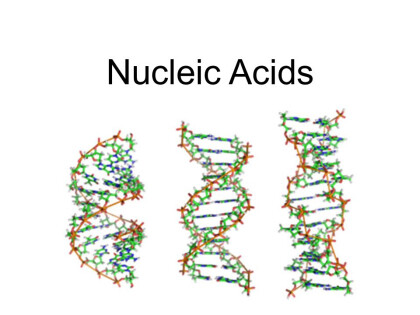
Nucleic acid
• Nucleic acids are molecules that store information for cellular growth and reproduction.
• Nucleic acids are polymers of nucleotides.
• Nucleotides are carbon ring structures containing nitrogen linked to a 5-carbon sugar and a phosphate group.
History
• Firstly it is called nuclein because it is isolated from the nuclei of pus cells.
• Nuclein was shown to have acidic properties, hence it became called nucleic acid.
Types of nucleic acid
• There are two types of nucleic acid
• Deoxyribonucleic acid (DNA)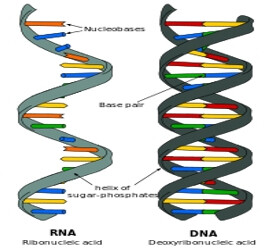
• Ribonucleic acid (RNA)
The distribution of nucleic acids in the eukaryotic cell
• DNA is found in the nucleus
• with small amounts in mitochondria and chloroplasts
• RNA is found throughout the cell
Nucleic acid structure
• Nucleic acid are polynucleotides.
• Their building blocks are nucleotides.
• All nucleotides contain three components • A nitrogen base
• A pentose sugar
• A phosphate group
Ribose is a pentose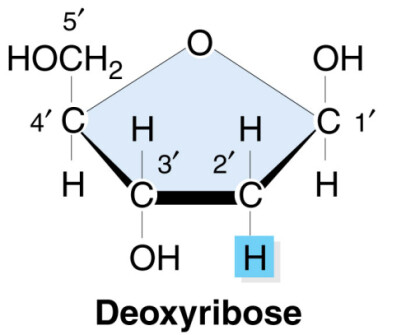
Difference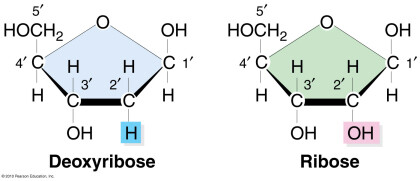
Nucleotide structure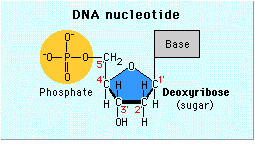
The sugar phosphate backbone
• The nucleotides are all orientated in the same direction
• The phosphate group joins the 3rd Carbon of one sugar to the 5th Carbon of the next in line.
Bases in nucleotides
• The bases are attached to the 1st carbon
• Their order is important because it determines the genetic information of the molecule.
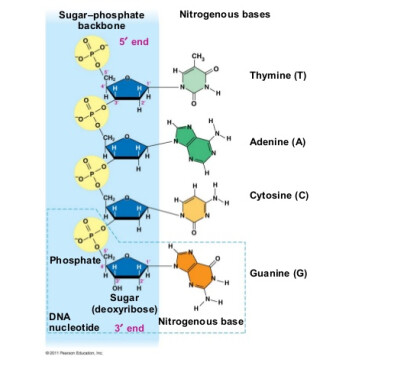
DNA is made of two strands of polynucleotide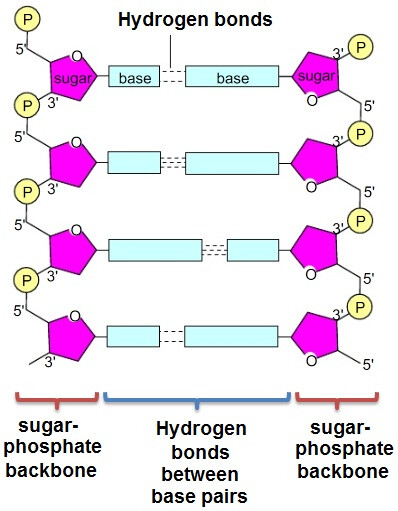
Nucleotides and Nucleosides
• Nucleotide = Nitrogenous base + Pentose + Phosphate
• Nucleoside = Nitrogenous base + Pentose
Nucleic Acid Functions:
• Storage of genetic information (DNA)
• Transmission of genetic information (mRNA)
• Processing of genetic information (ribozymes)
• Protein synthesis (tRNA and rRNA)
How DNA Works
• 1- DNA stores genetic information in segments called genes
• 2- The DNA code is in Triplet Codons (short sequences of 3 nucleotides each)
• 3- Certain codons are translated by the cell into certain Amino
• acids.
• 4. Thus, the sequence of nucleotides in DNA indicate a sequence of Amino acids in a protein.
The sequence of bases in DNA forms the genetic code
• A group of three bases (a triplet) controls the production of a particular amino acid in the cytoplasm of the cell.
This is known as the triplet code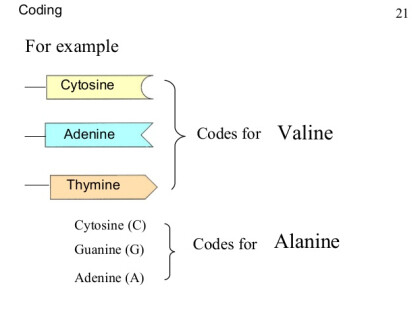
• Each triplet codes for a specific amino acid
• CGA - CAA - CCA - CCA - GCT - GGG - GAG -CCA
• Ala Val Gly Gly Arg Pro Leu Gly
• The amino acids are joined together in the correct sequence to make part of a protein
Structure of gene in prokaryotes and eukaryotes
Introduction
• A gene is specific sequence of DNA containing genetic information required to make a specific protein
• Prokaryotic gene is uninterrupted.
• In eukaryotic gene the coding sequences (exon) are separated by non coding sequences called introns.
History
• Mendel in 1865 on the basis of breeding experiment with peas. He assumed that each trait determined by a pair of inherited factor which are now called gene
• But firstly this term gene is coined by wilhelm in 1909.
What is gene?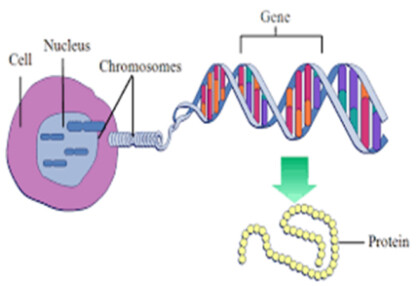
• The gene is the functional unit of heredity.
• Each game is a segment of DNA that give rise to protein
• A gene may exist in alternative forms called alleles. • Chromosome in fact carry gene.
Prokaryotic gene structure
Prokaryotic genes are collinear with their proteins
Coding regions
Promoter element
Terminal region
Coding region
• Starts with an initiator codon and ends with termination codon
• No introns
• Collinear to its k RNA
Promotes elements
• The upstream elements from the start of the coding region include promoter sequences.
• At -10 there is a sequence TATAAT
• At-35 another consensus sequence is TTGACA
Terminal region of the gene
• Sequences for the termination of transcription
• It take place by Rho dependent more or Rho independent mode
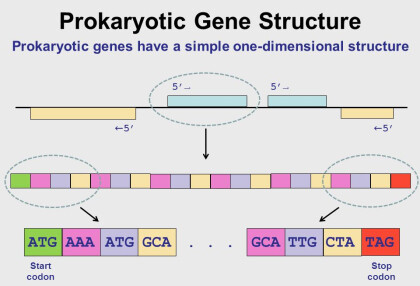
Eukaryotic gene structure
• Exons • Introns
• Promoter sequences
• Terminator sequences • Enhancer
• Silencer
Exons
• Coding sequence, transcribed and translated. Coding for amino acids in the polypeptide chain.
• Vary in number, sequence and length. A gene start and ends with exon
Introns
• Coding sequences are separated by non coding sequences called introns .
• Any nucleotide sequence that are removed when the primary transcript is processed to give the nature RNA are called introns.
• All introns share the base sequence GT in the 5' end and AG in the 3' end.
Promoters
• A promotor is a regulatory region. • Core promotor
• Transcription start site
• Finding site for RNA polymerase
• General transcription factor binding sites. • Proximal promotor
• Specific transcription factor binding site
Terminator
• Recognized by RNA polymerase as a signal to stop transcription.
• Enhancer
• Enhance the transcription of a game • silences
• reduce or shut off the expression of a near by gene
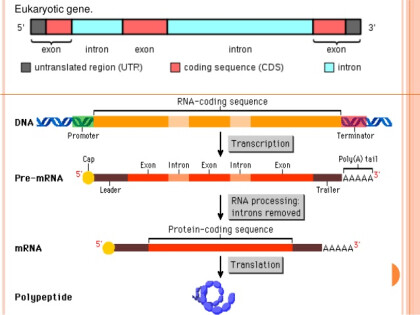
Significance of introns
• Introns don't specify the synthesis of proteins but have other important cellular activities.
• Introns allow exons to he joined in different combinations, resulting in the synthesis of different proteins from the same gene.
• Important role in evolution by facilitating recombination between exons of different genes (exon shuffling)
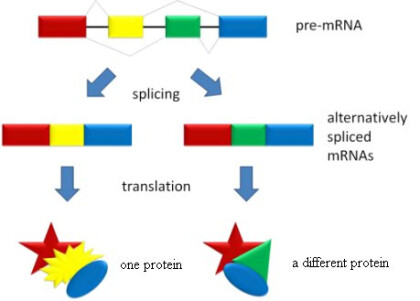
Publication Date: 12-29-2020
All Rights Reserved
Dedication:
Book By Hussan Ahmad Ks Nucleic acid • Nucleic acids are molecules that store information for cellular growth and reproduction. • Nucleic acids are polymers of nucleotides. • Nucleotides are carbon ring structures containing nitrogen linked to a 5-carbon sugar and a phosphate group. History • Firstly it is called nuclein because it is isolated from the nuclei of pus cells • Nuclein was shown to have acidic properties, hence it became called nucleic acid. Nucleic acid structure • Nucleic acid are polynucleotides. • Their building blocks are nucleotides. • All nucleotides contain three components • A nitrogen base • A pentose sugar • A phosphate group
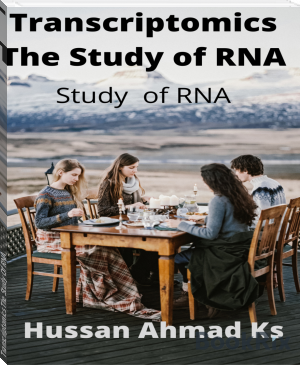




Comments (0)